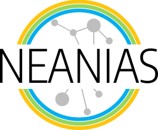The scientific work “Mapping and evaluating kinematics and the stress and strain field at active faults and fissures: a comparison between field and drone data at the NE rift, Mt Etna (Italy)”, with the support of NEANIAS project, has been published in Solid Earth on 13 Apr 2021.
- Tibaldi, A., Corti, N., De Beni, E., Bonali, F. L., Falsaperla, S., Langer, H., Neri, M., Cantarero, M., Reitano, D., and Fallati, L.: Mapping and evaluating kinematics and the stress and strain field at active faults and fissures: a comparison between field and drone data at the NE rift, Mt Etna (Italy), Solid Earth, 12, 801–816, https://doi.org/10.5194/se-12-801-2021, 2021.
Abstract
We collected drone data to quantify the kinematics at extensional fractures and normal faults, integrated this information with seismological data to reconstruct the stress field, and critically compared the results with previous fieldwork to assess the best practice. As a key site, we analyzed a sector of the northeast rift of Mt Etna, an area affected by continuous ground deformation linked to gravity sliding of the volcano's eastern flank and dike injections. The studied sector is characterized also by the existence of eruptive craters and fissures and lava flows. This work shows that this rift segment is affected by a series of NNE- to NE-striking, parallel extensional fractures characterized by an opening mode along an average N105.7∘ vector. The stress field is characterized by a σHmin trending northwest–southeast. Normal faults strike parallel to the extensional fractures. The extensional strain obtained by cumulating the net offset at extensional fractures with the fault heave gives a stretching ratio of 1.003 in the northeastern part of the study area and 1.005 in the southwestern part. Given a maximum age of 1614 CE for the offset lavas, we obtained an extension rate of 1.9 cm yr−1 for the last 406 years. This value is consistent with the slip along the Pernicana Fault system, confirming that the NE rift structures accommodate the sliding of the eastern flank of the volcano.
Financial support
This research has been supported by the European Commission, Horizon 2020 Framework Programme (NEANIAS (grant no. 863448)).
Get the paper at https://se.copernicus.org/articles/12/801/2021/
